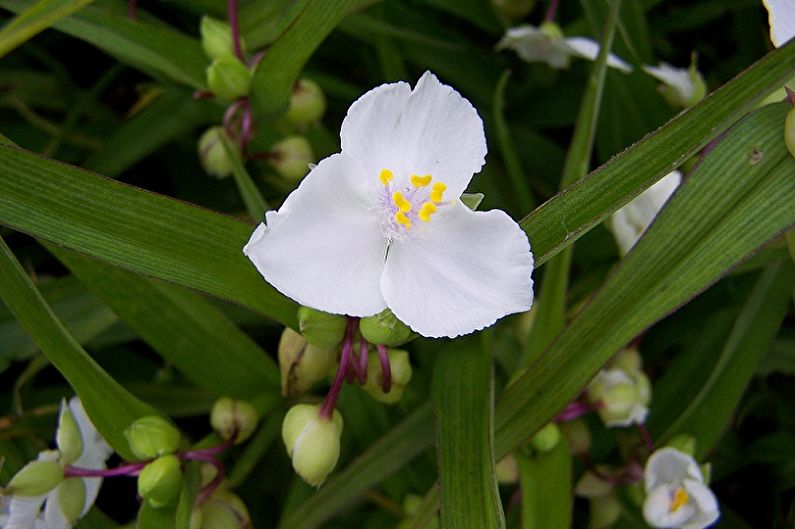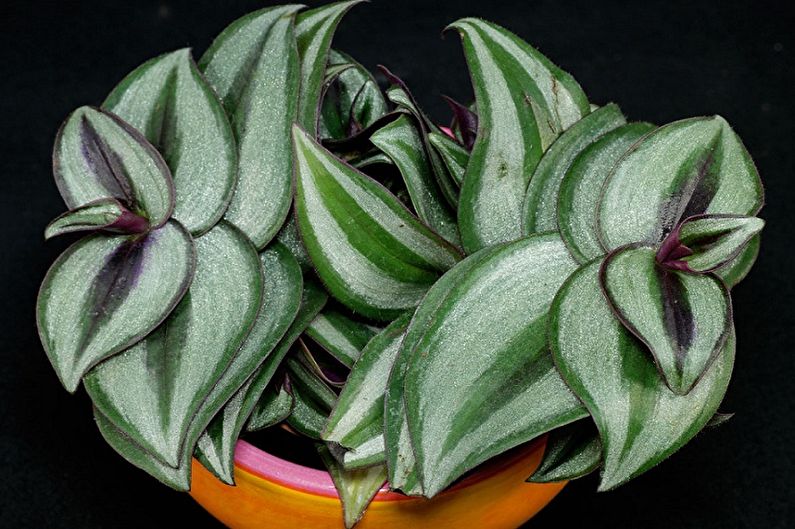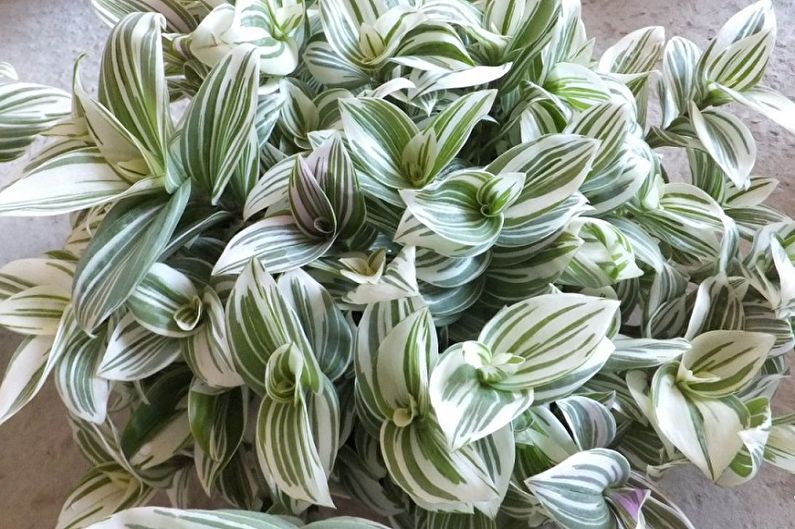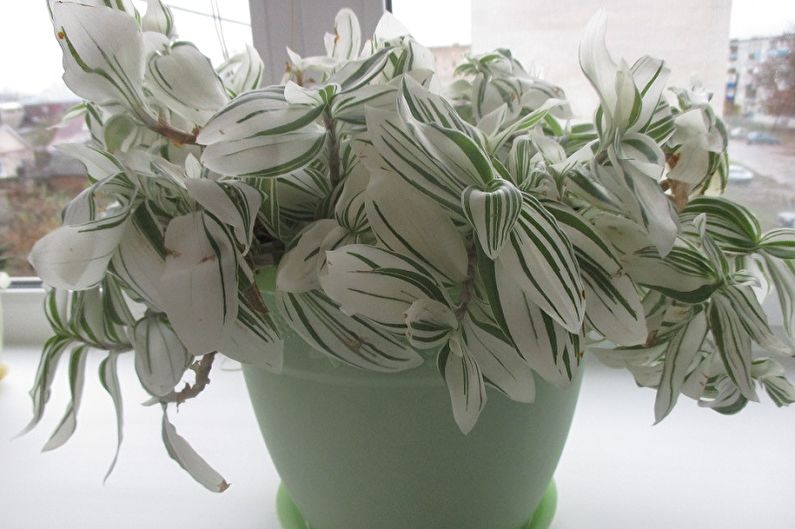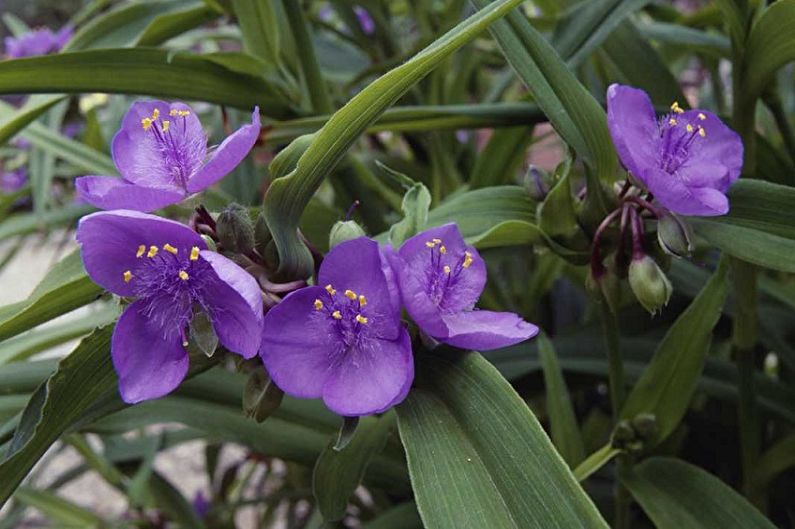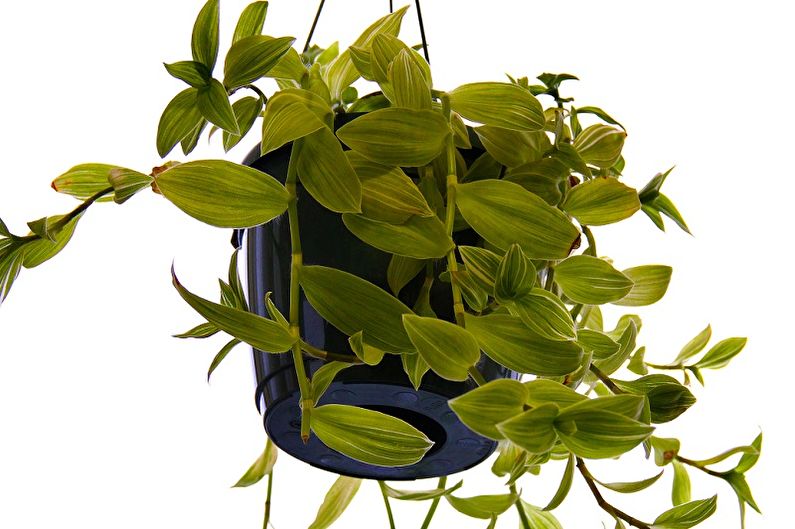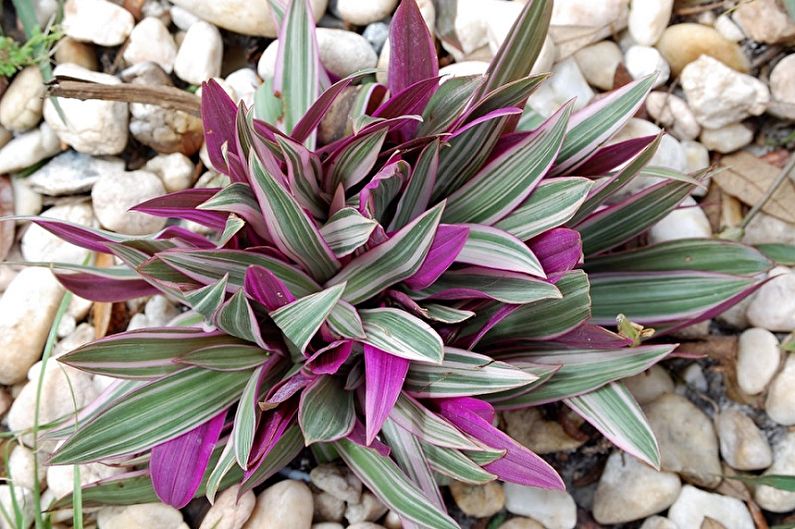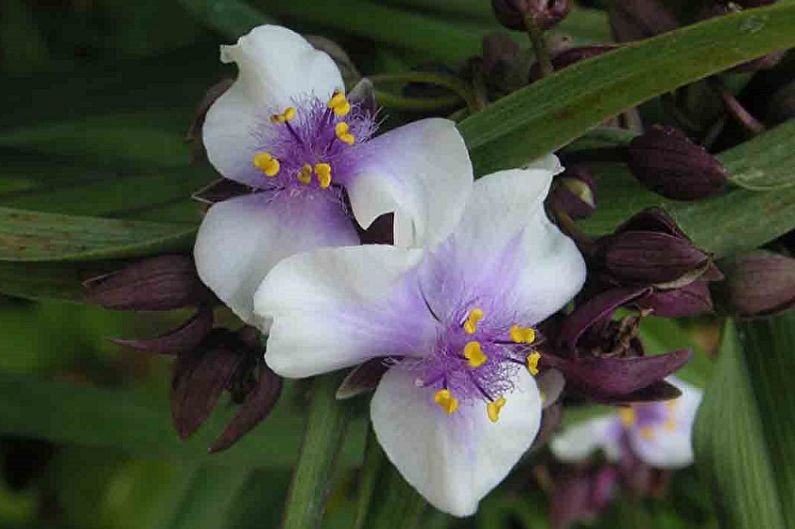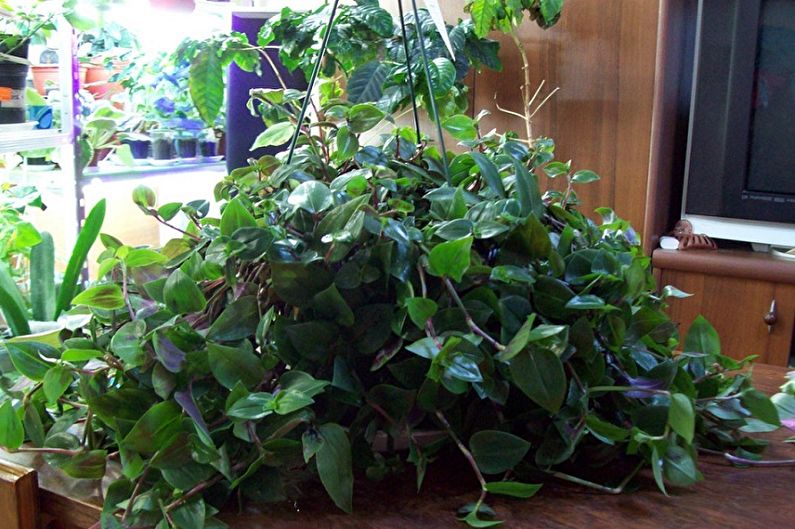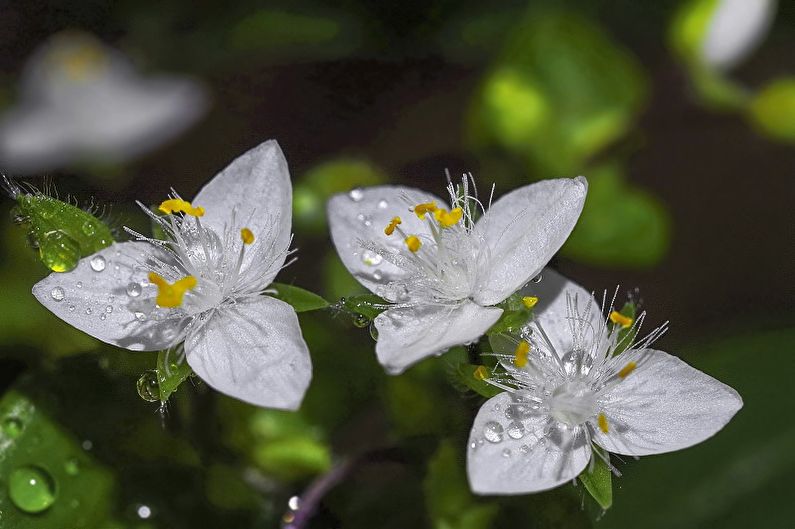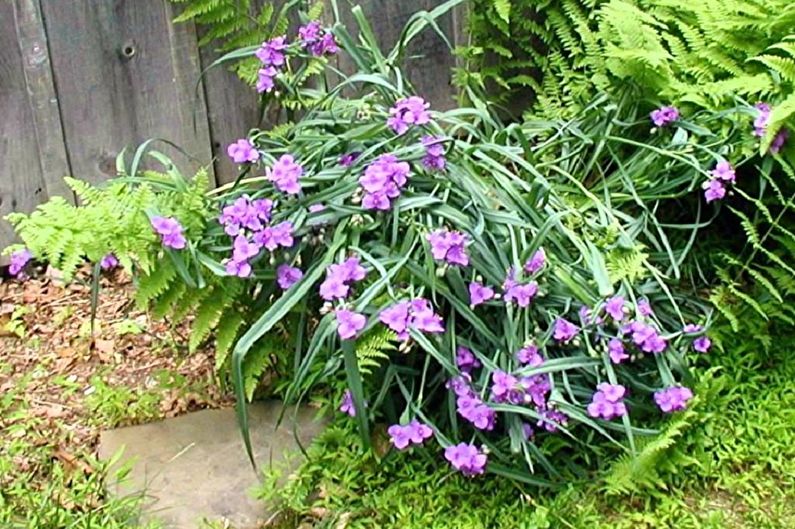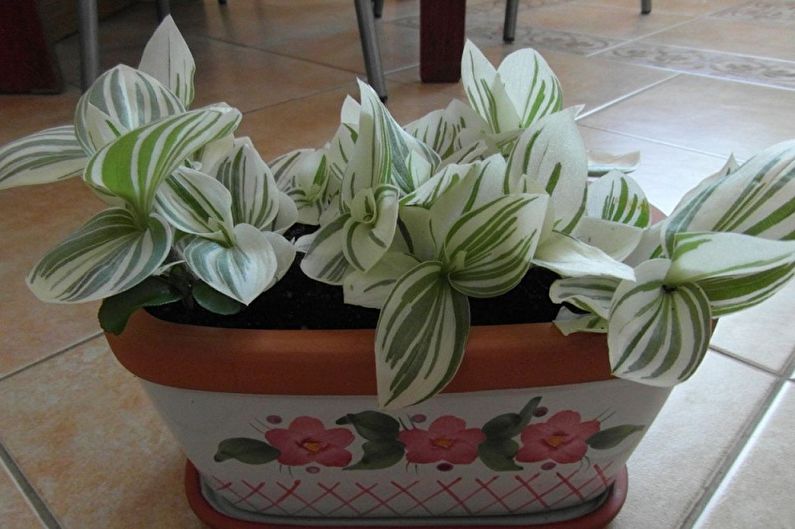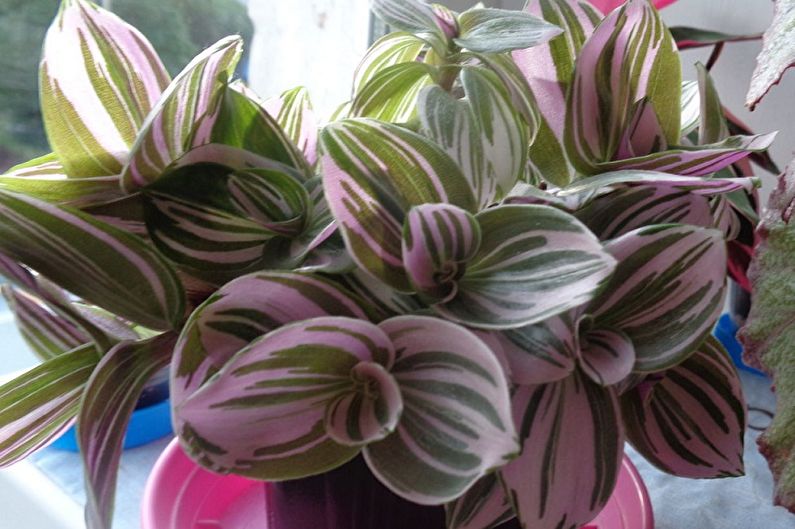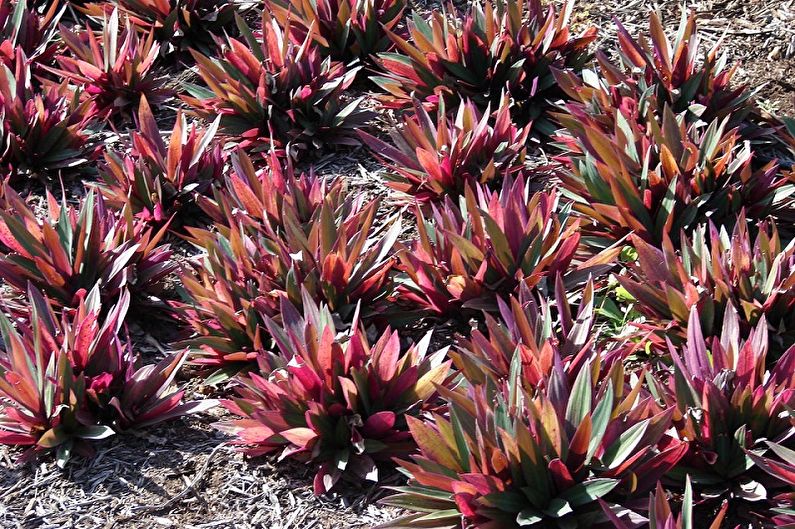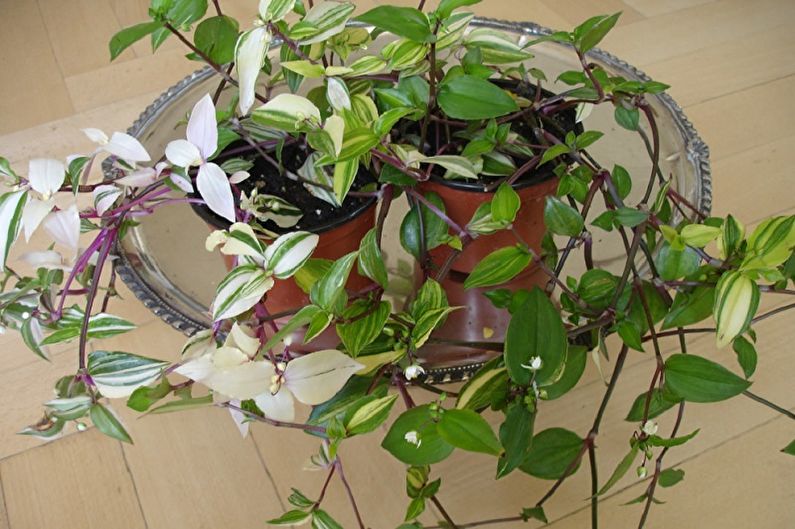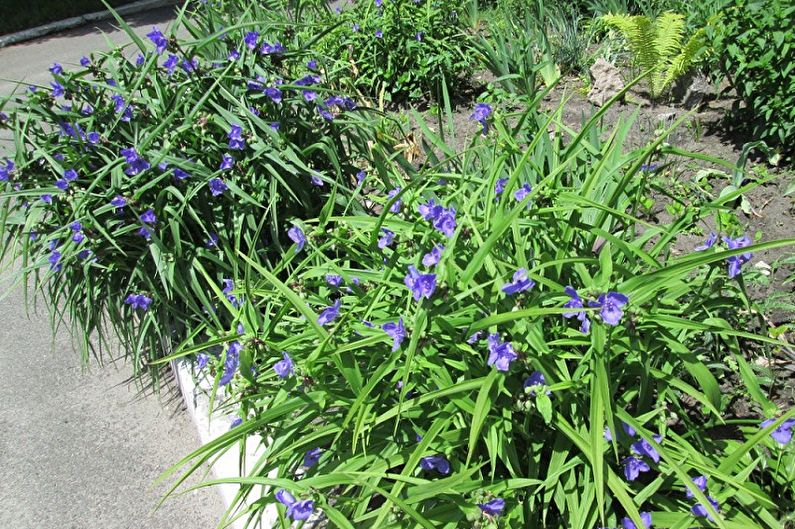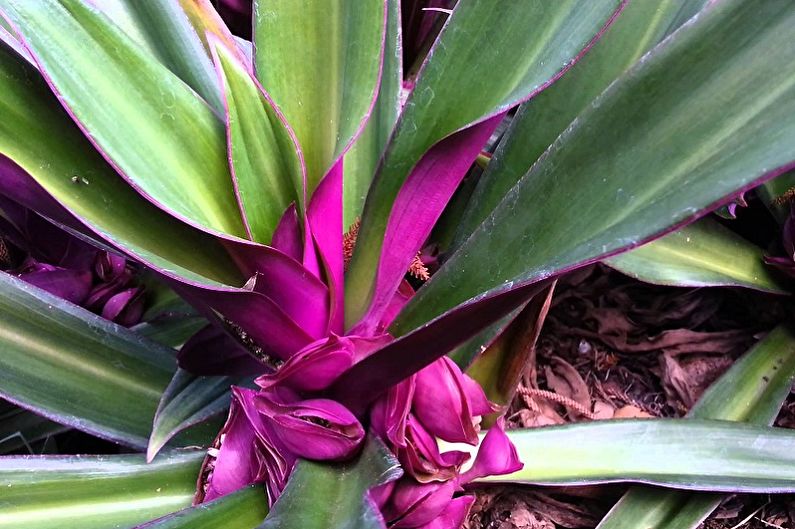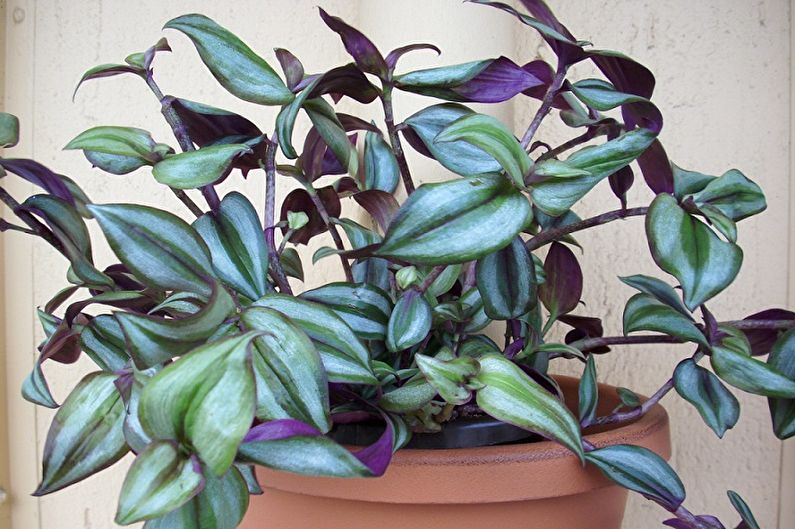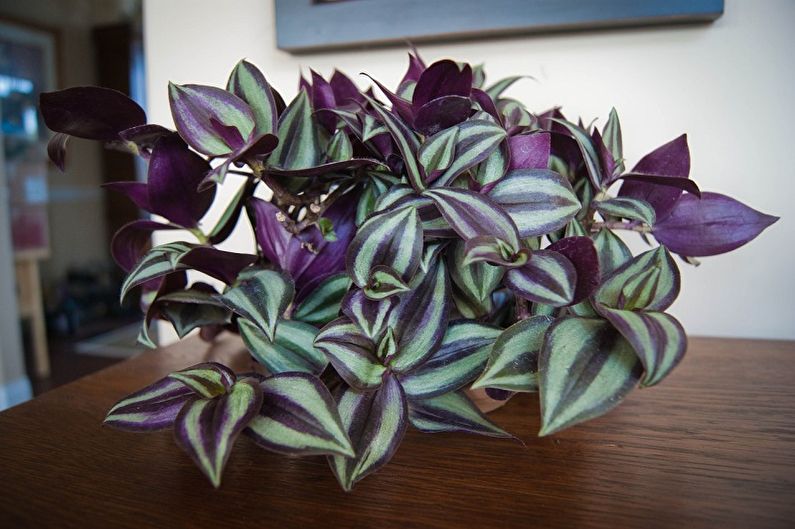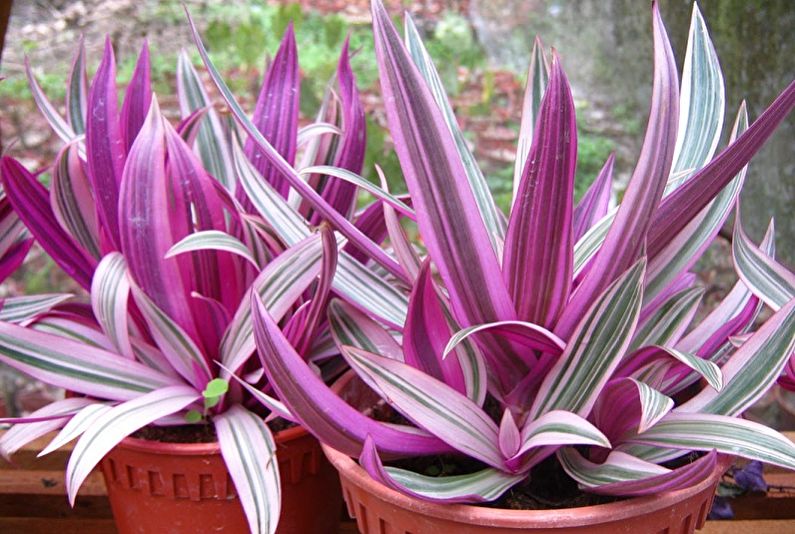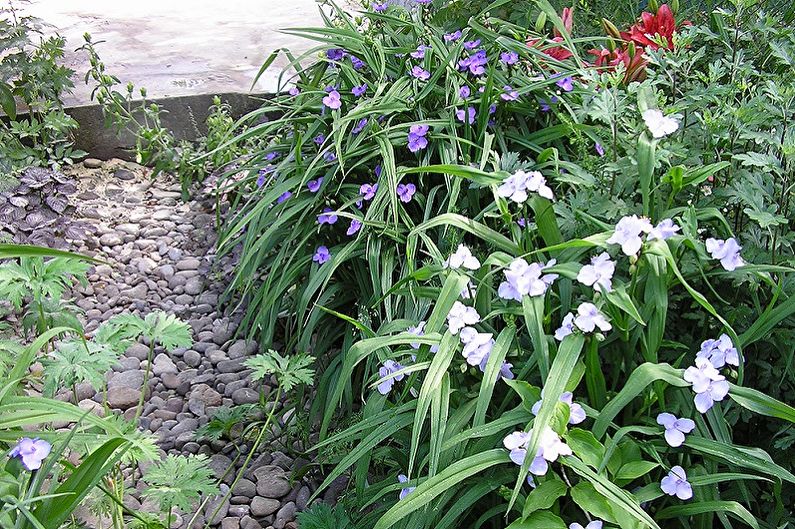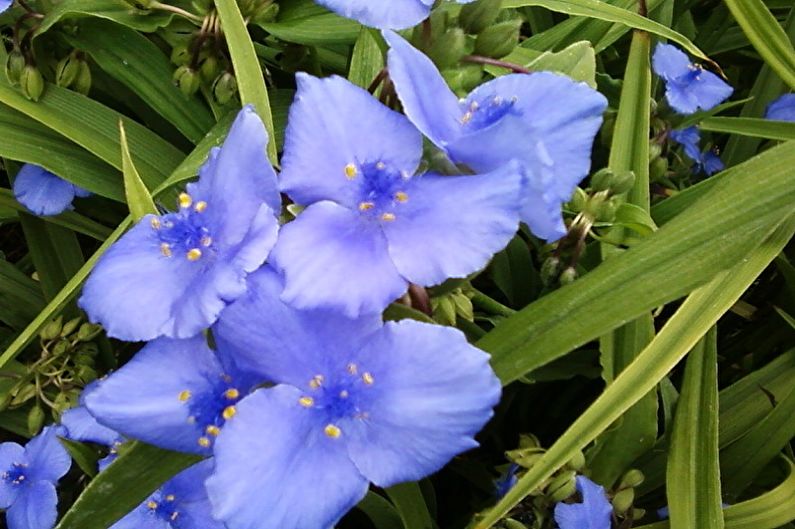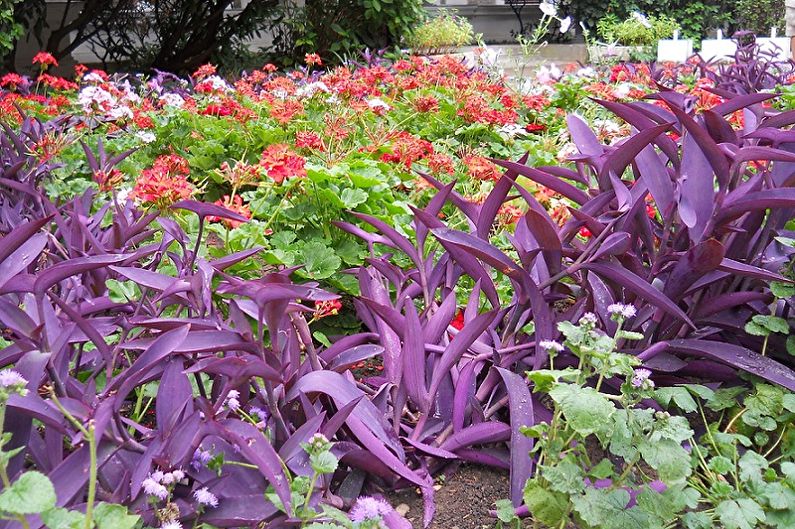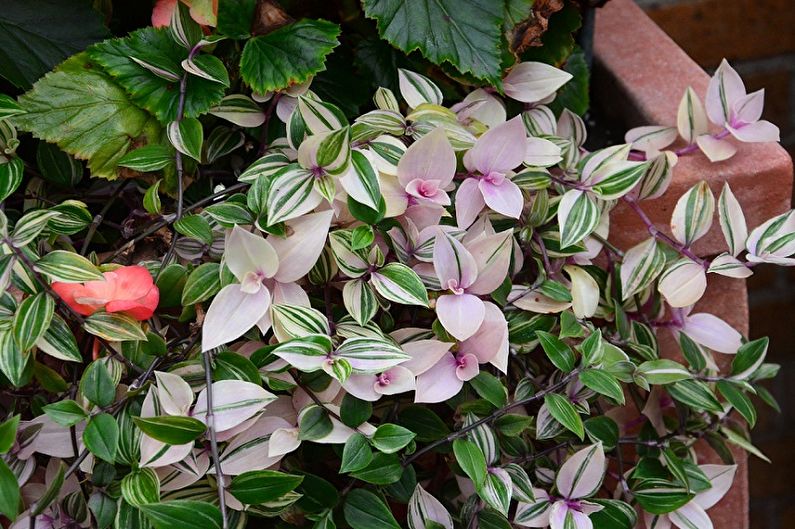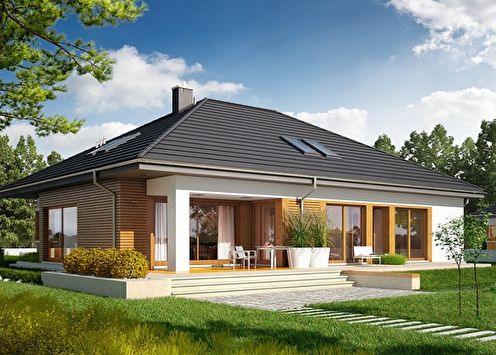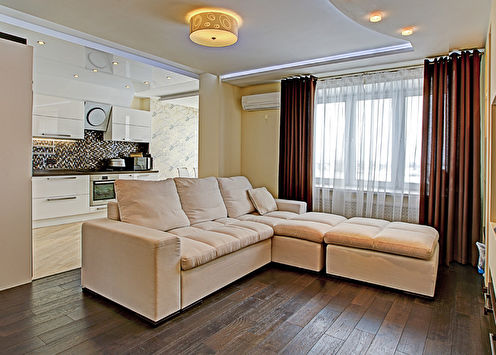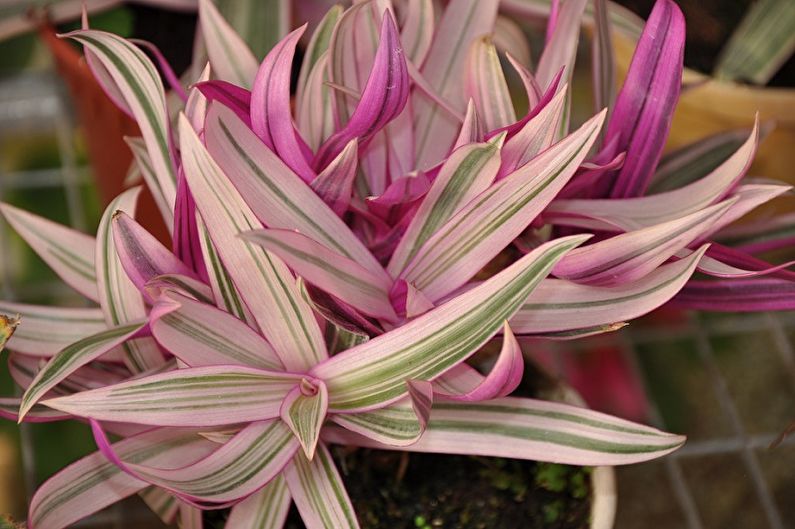
Tradescantia is a herbaceous perennial with amazing decorative properties. Her plain or variegated foliage of green, purple, pink tones often makes her a real decoration of room interiors, as well as personal territories. Delicate shoots are regularly covered with flowers of various colors. The birthplace of the plant is Latin America, although today it is quite common on various continents. It got its name in honor of the English naturalists John Tradescant Sr. and John Jr., who made a great contribution to science at the turn of the XVI - XVII centuries.
The main types
Tradescantia has many forms and species, of which there are about 75. This is largely due to its widespread distribution on various continents, but breeders who tirelessly grow new varieties should be given credit. A variety of species allows today to grow this culture both indoors and in personal plots, admiring its beauty. Consider the most famous and favorite species of gardeners.
White-flowered tradescantia
The birthplace of this species is both the American continent. The white-flowered tradescantia perfectly takes root in apartment conditions and even received the second name “gossip of a woman” because of the many interwoven shoots and leaves that form a ball.
Its main decorative properties are in the original leaves, which have a striped pale green color, an elongated shape and a glossy surface. In some varieties, the stripes may have a golden hue. Flowers, as the name implies, are white, sometimes have a pinkish tint, their shape is similar to small stars. Although a single flower lives only a day, the flowering of the flowerpot can be observed for several months, as new buds open daily.
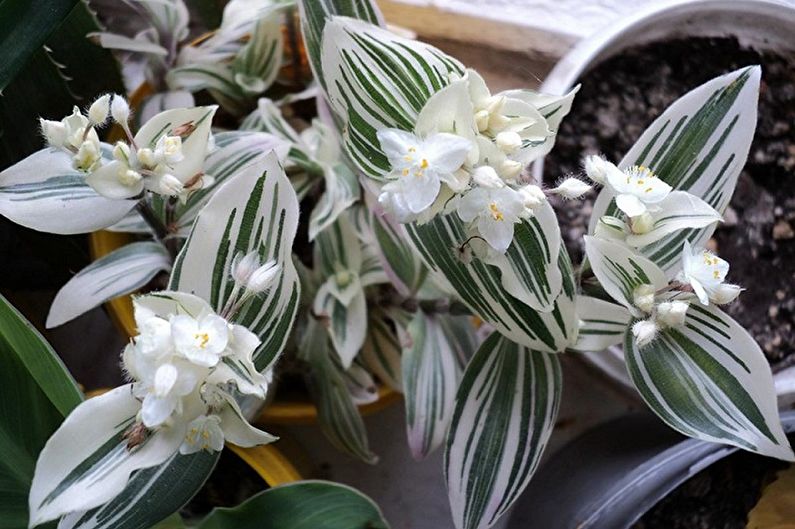
Tradescantia Virgin
This herbaceous perennial hails from the US state of Virginia. The peculiarity lies in a rather long flowering, and the flowers have a bright expressive color, represented by a blue palette. The leaves of a linear shape grow up to 20 cm in length.

Tradescantia Anderson
This group of decorative varieties that are perfect for growing both at home and in the garden. Plants grow up to 80 cm in length, have high decorative indicators, and flat flowers are painted in blue, white, purple or pink tones. An interesting feature of this species is its love for shady areas - its flowers look much more beautiful when it is cloudy on the street.
Tradescantia got its name in honor of the American botanist E. Anderson, who studied it for a very long time.
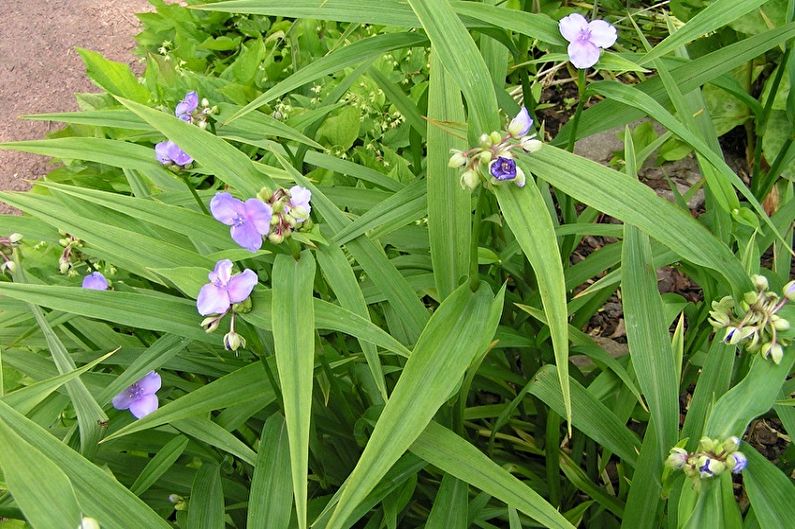
Tradescantia Blossfeld
This type of tradescantia has thick, fleshy stems with a reddish-green skin, creeping along the ground. The dark green surface of the leaves sometimes has a reddish hue, and the reverse side is densely pubescent, purple. On the sepals you can see a silvery pile.

Tradescantia Zebrina
It is also called a zebra-shaped tradescantia due to the original color of colorful leaves, the inside of which is purple-purple, and the outside is green with white and silver stripes that are located on both sides of the central vein. The color of the blossoming buds is mainly purple or scarlet. The plant has a creeping stem and is often used as an ampelous.
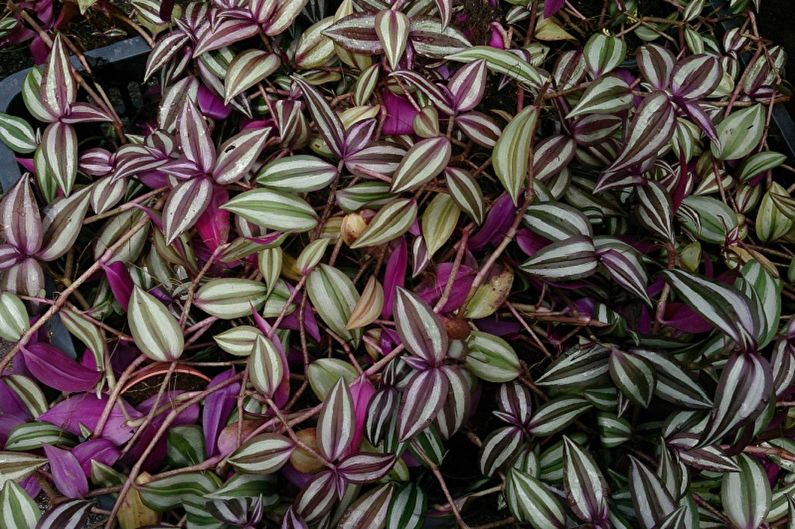
Tradescantia vesicular
This beautiful perennial plant, reaching a height of 30-40 cm, has erect foliage, which forms a dense rosette. The color of the leaf plate on the front side is green, and on the back it is pink and purple, so this tradescantia looks quite bright. The flowering of small white buds that appear under a leaf cover gives it more originality.
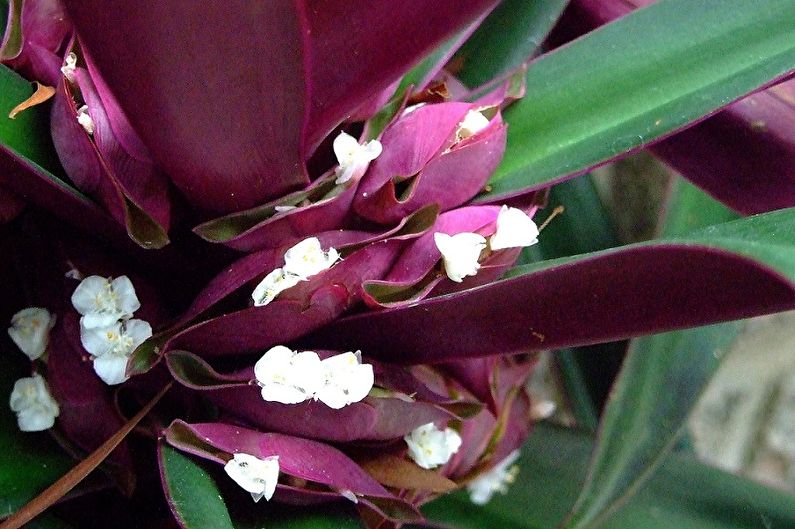
Proper care of tradescantia
To ensure high decorativeness of the tradescantia, it is necessary to follow certain rules of care, creating a favorable microclimate. Growing this plant is by no means difficult, which is one of the reasons for their popularity among gardeners.
Lighting
For the most part, the tradescantia loves bright light, but is afraid of direct sunlight, which can cause burns. With a lack of lighting, the stems are pulled out, and the thinning foliage becomes pale. In apartment conditions it is better to choose places for flowerpots on window sills facing the east or west side. In the open direct sun, the tradescantia is left in the morning and evening.
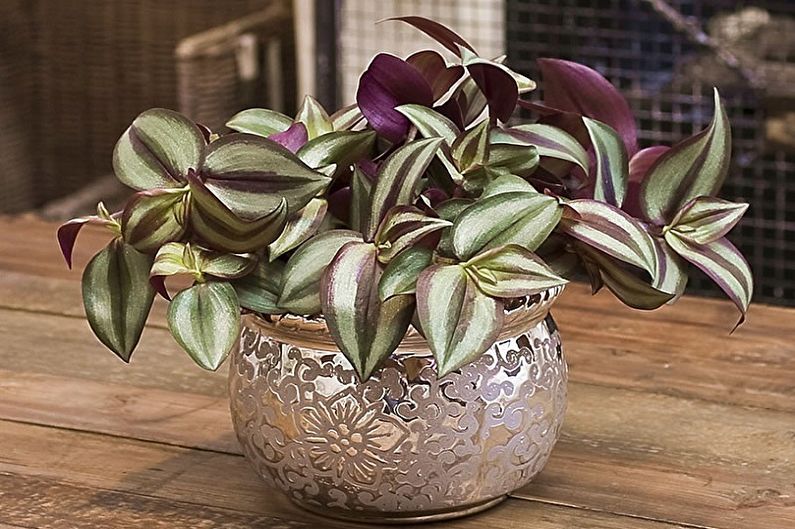
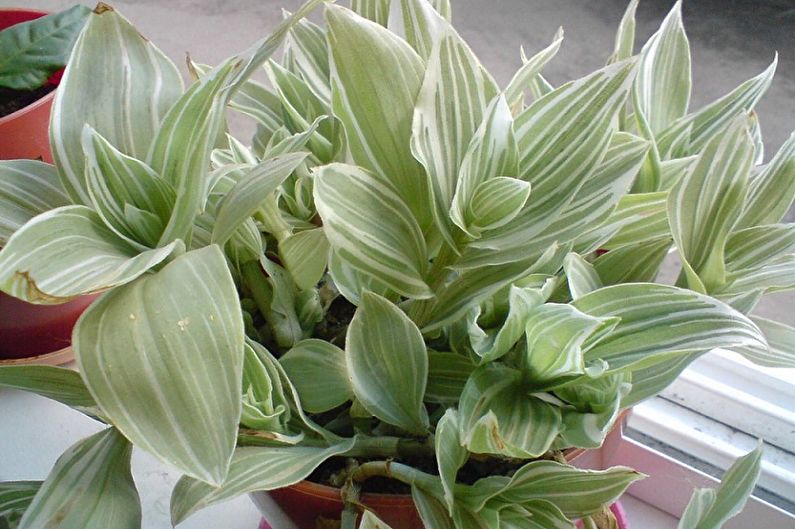
Temperature
The plant does not require special temperature conditions. In the warm season - from mid-spring to October - it will feel comfortable at a temperature of + 25C. With the onset of cold weather, it must be gradually reduced. The tradescantia should overwinter at a temperature of + 10 ... + 12 ° C so that it enters a state of rest. On especially hot days, indoor flowerpots are best transported to an open, ventilated balcony.
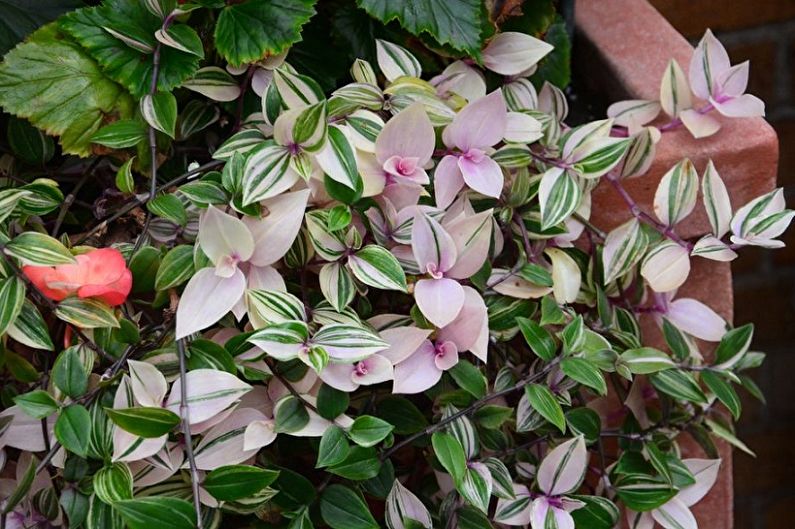
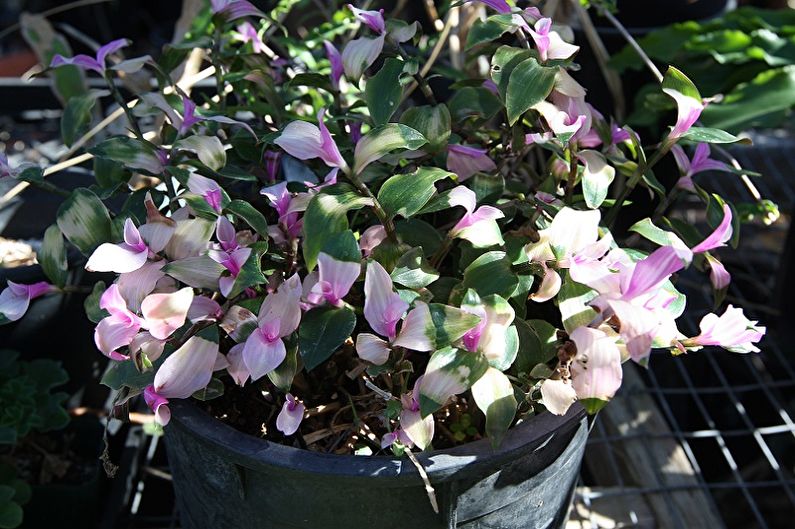
Humidity
Tradescantia prefers moderate humidity. It must be washed periodically from dust, as well as sprayed on warm days. These procedures are especially useful for plants living in hanging flower pots, as they are most prone to drying out.
Waterlogged soil is a danger, which can lead to rotting of the root system, therefore, even when planting a tradescant, it is necessary to take care of drainage. Excess water remaining after irrigation in the pan must be removed.
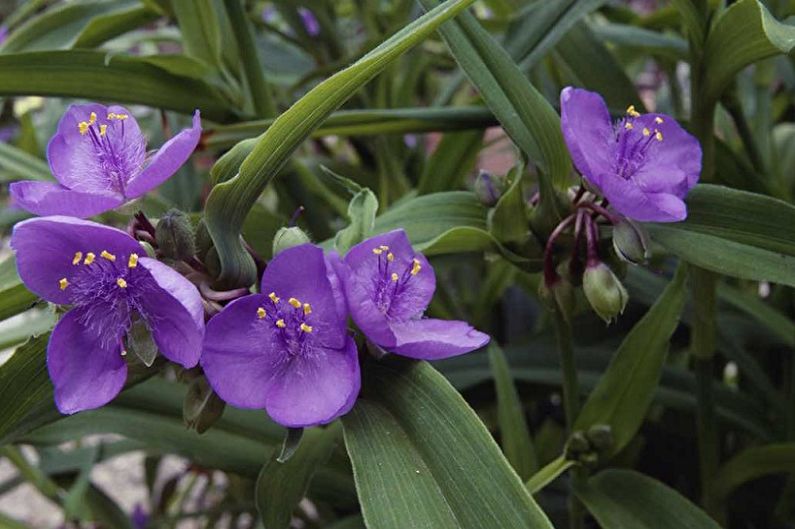
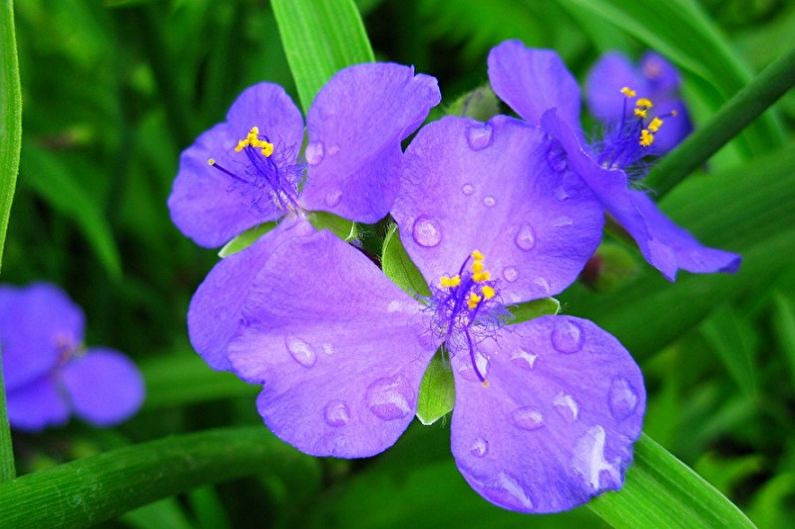
Watering
Particularly careful watering is necessary for tradescantia in the spring and summer periods - the soil should always remain moist. In winter, the amount of drinking is reduced - often about 70-80 ml of water per week is enough for one flowerpot.
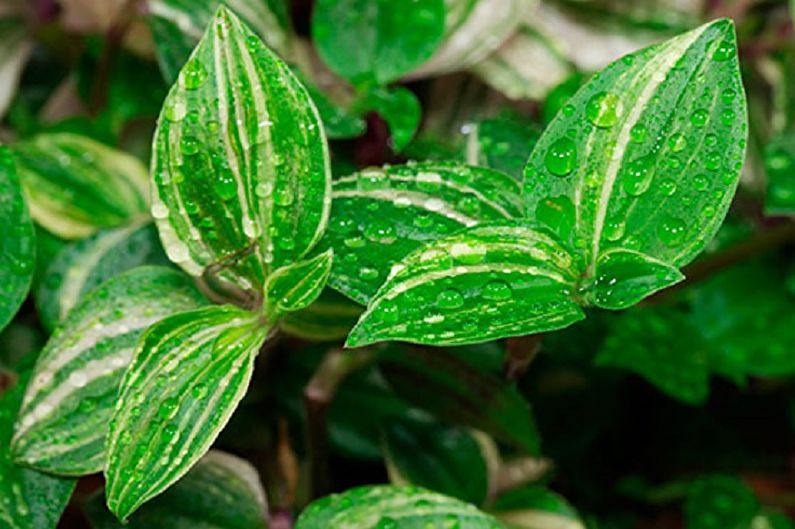
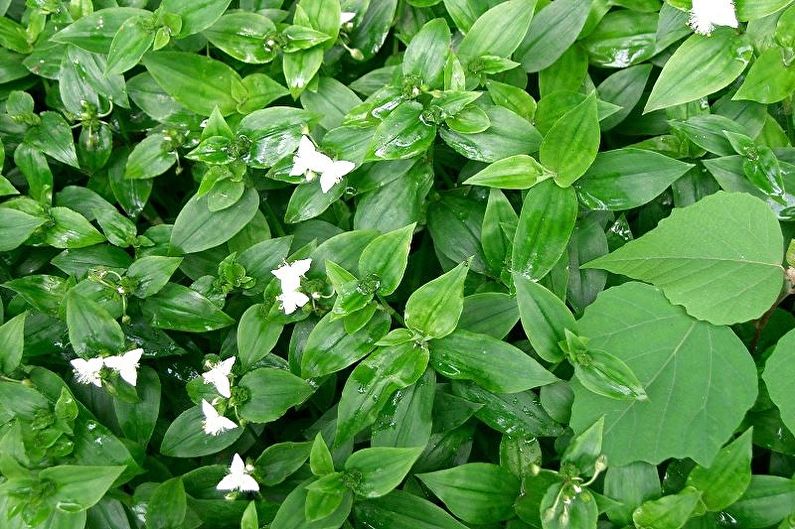
Fertilizers and fertilizing
To maintain the decorative appearance of the plant, it must be fed in the spring and summer, during the period of active growth. For this purpose, you can use complex dressings designed for decorative and deciduous indoor flowers. In winter, fertilizers are not applied, because an excess of nutrients in low light can lead to death.

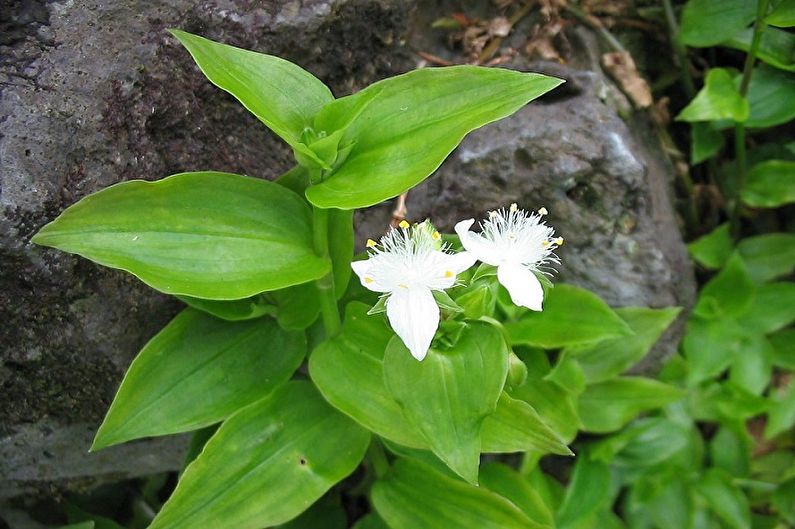
Diseases and Pests
Diseases occur most often due to improper care for tradescantia. For example, if there is a lack of light, the stems will begin to stretch, and the leaves will become thinner. With a lack of moisture or too direct sunlight - the leaves turn brown. To resolve the problems, normal conditions should be created.
When the culture grows old, the stems are exposed at the base, and the only way out is to use the tops of the shoots as cuttings. The rest of the plant is thrown away.
Another ailment that can comprehend the culture is a sooty mushroom, which settles on the leaves in those places where traces of scale insects or aphids are left. It provokes respiratory failure and photosynthesis, which leads to a weakening of the plant.
Like all decorative flowering crops, tradescantia does not remain without attention of various pests, for which it becomes a real treat. Particularly dangerous are the following representatives:
Aphids are a sedentary insect that feeds on cell sap; as a result, foliage shrinks and buds fall. It is necessary to wash the plant with soapy water and treat with Actellic.
The spider mite is so small that it can only be seen in group colonies that look like pollen on the leaves.Signs of damage are determined by falling leaves and the presence of a thin web. Tradescantia must be thoroughly bathed and create more humid conditions.
Scaffold - settle on the underside of the leaf and feed on its juice, leaving a sticky discharge. Careful pest removal and insecticide treatment will be required.

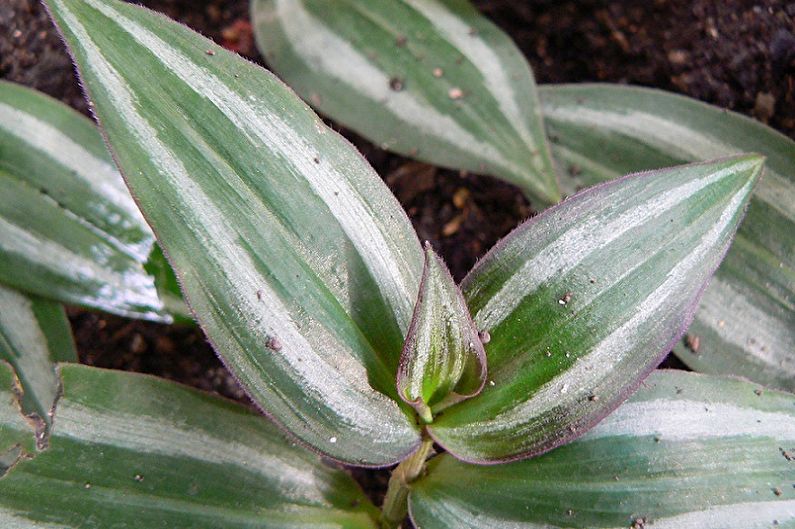
How to transplant tradescantia
The need for transplantation depends on the age of the crop. Spend it, as a rule, after 2-3 years. It is worth noting that the tradescantion tolerates the process well, if you take care of creating optimal conditions.
Removing the plant from the pot, you can, if necessary, divide the bush, remove the shrunken branches, and also clear the rhizome from the old earth. The new soil should be light and nutritious, contain deciduous and soddy soil, humus, a little sand for better breathability. You can buy a finished composition. A drainage layer should also be laid.
The planted tradescantia should be placed in the shade for the first few days so that its efforts are directed to rooting. When landing in open ground, it is worth choosing a site where partial shade will be created at noon.
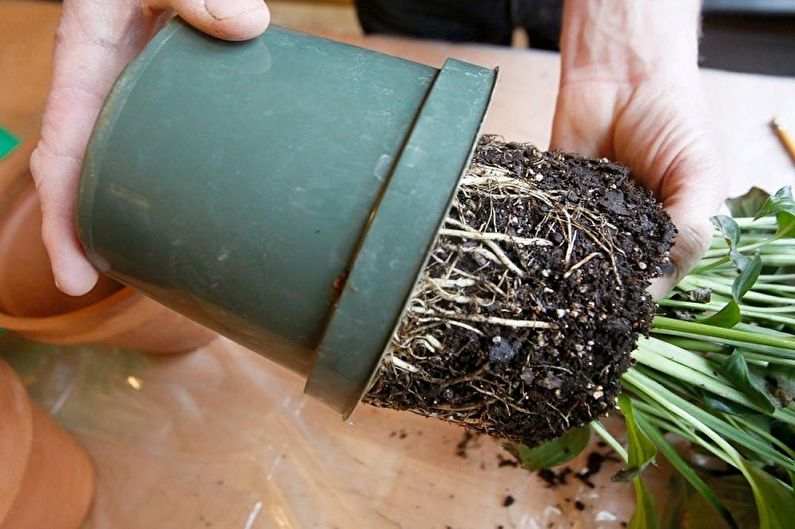
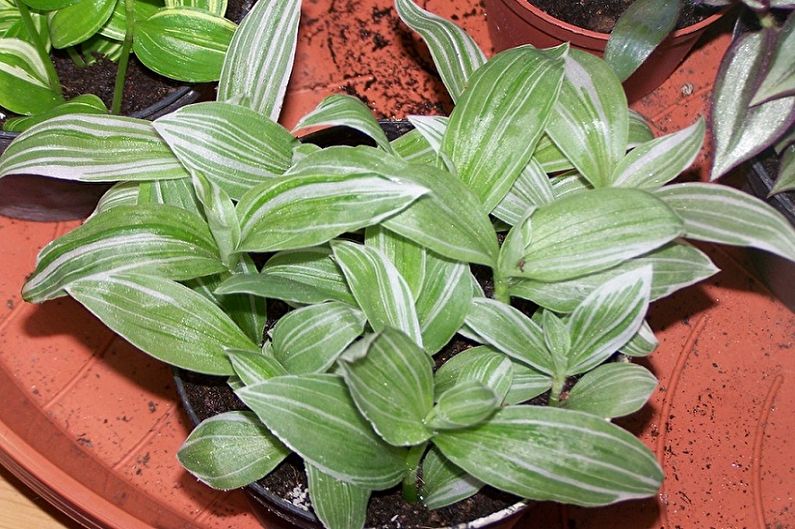
Propagation at home
To propagate the tradescantia, flower growers use one of three methods - grow seedlings from seeds, divide bushes, or use the vegetative method of cuttings.
Propagation of tradescantia by seeds
Seeds for seedlings must be sown in March. It is necessary in advance to prepare shallow containers with soil containing sand and peat. Seeds are slightly deepened in the ground, sprinkled and moistened. Next, the container is covered with a film (glass) and installed in a warm place. Regularly, the greenhouse should be opened, wipe the condensate and moisten the soil. With the appearance of the first shoots (approximately, in two weeks), the cover is removed. When full leaflets appear, seedlings can be transplanted into “adult” pots.
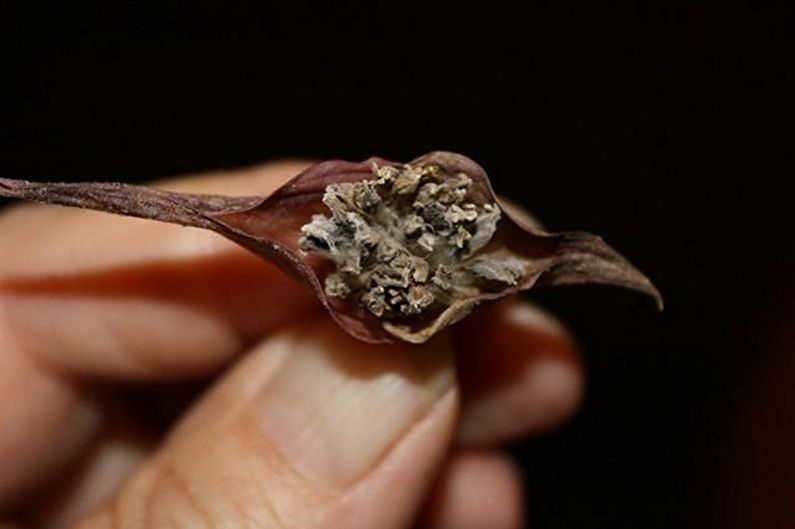

Propagation of tradescantia by cuttings
In this case, it is necessary to cut off the tops of the stems with a sharp knife about 12-15 cm long. For rooting, they are placed in a container with water or soil. Next, you need to create a greenhouse and keep it warm. Rhizome develops over a period of 7–10 weeks, after which the sprouts will begin to grow actively.
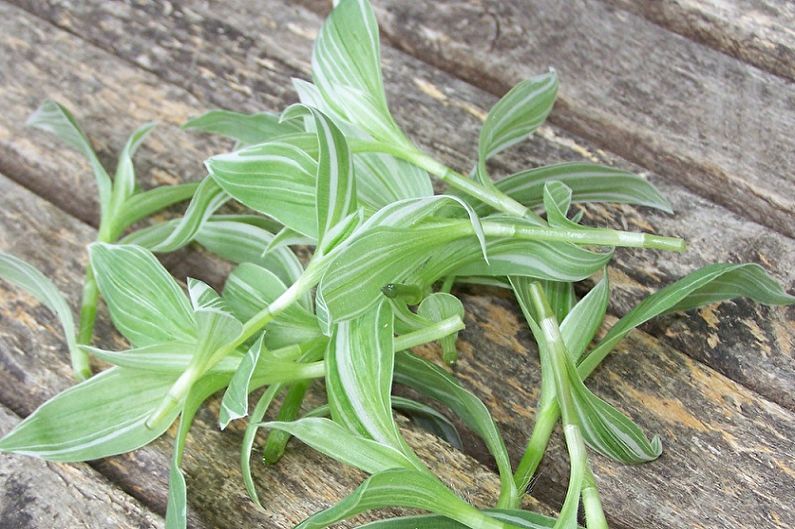
Propagation of tradescantia by division
You can divide the bush during its transplant. The process consists of extracting an adult bush, shaking the root off the ground and dividing it into several parts using a blade. The resulting material is immediately planted in prepared containers with soil so that the rhizome does not dry out.

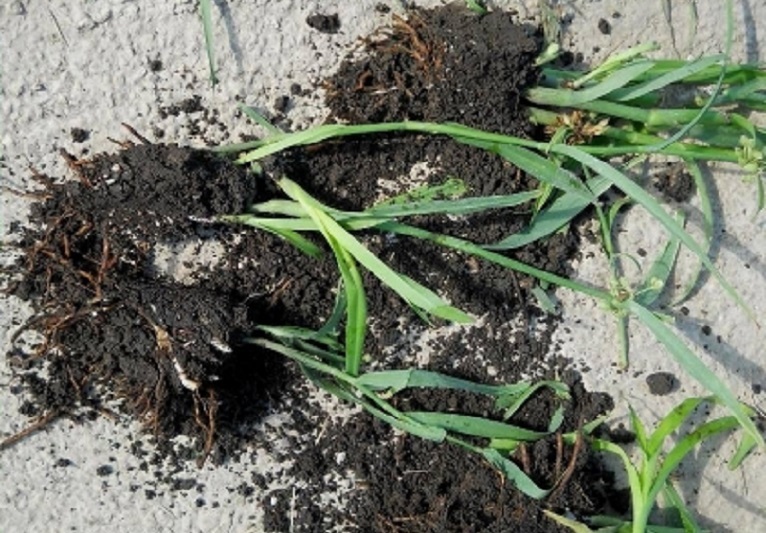
Tradescantia - photo
Juicy bright green stems, stunningly decorative leaves and colorful blooms are the main advantages of the tradescantia. This can be clearly seen in the further photo selection, which presents various types of culture, how to place it in home and garden conditions. Enjoy watching!

